I used Excel to calculate the confidence interval on a predicted value, at 95% confidence interval, so to calculate t-value I used function TINV(5%,6) thats a 2.5% and 2.5% split on each side, where 6 is degree of freedom.
But in R, the predict function, when I give level= 0.95, I get a different interval range, however giving level=0.975 gives me the same answer as excel.
So, seems like in predict when you give level=0.975, then it takes a split of 2.5% and 2.5% on each side
But all these websites, For example, another example, say we are looking for 95% confidence interval giving the formula level=0.95 (this would mean a 5% split on each side), but thats 90%, the level should be 0.975 for a 95% interval.
Whats going on? I am probabily getting confused.
EDIT:
predict(model, data.frame(c= 12.75, p= 6, f=8), level = 0.975, interval = "confidence")
The model here is a multiple linear regression
Data:
y <- c(85.10,106.30,50.20,130.60,54.80,30.30,79.40,91.00,135.40,89.30) # Total Sales
c <- c(8.50,12.90,5.20,10.70,3.10,3.50,9.20,9.00,15.10,10.20) # production cost
p <- c(5.10,5.80,2.10,8.40,2.90,1.20,3.70,7.60,7.70,4.50) # Promotion cost
f <- c(4.70,8.80,15.10,12.20,10.60,3.50,9.70,5.90,20.80,7.90) #First year box office
model <- lm(y ~ c + p + f)
Excel:
I have marked in yellow the forcasting in Excel
The problem is, with Excel I get forecast of 106.72 with upper 119.35 and lower 93.36 with =tinv(5%,6)
With R I get forecast of 106.72 with upper at 117.7 and lower at 95.65, level=0.95
With level=0.975 I get exact values as Excel.
In Excel:
=tinv(5%,6) = 2.45``Variance = 5.46
106.72 +/- tvalue*variance : 119.35 93.36
In R:
se.ci <- predi$se.fit # Variance: 4.518
alpha <- qt((1-0.95)/2,6) # Value: -2.45
predi$fit[1] + c(alpha, -alpha) * se.ci # gives me 117.77165 95.65941
As you can see the tstat value is the same but prediction is different.
But when I do this:
alpha <- qt((1-0.975)/2,6) # Value: -2.968
I get 93.30182 120.12924 same as excel! (Using level=0.975 in predict gets me the answer, hence the confusion)

